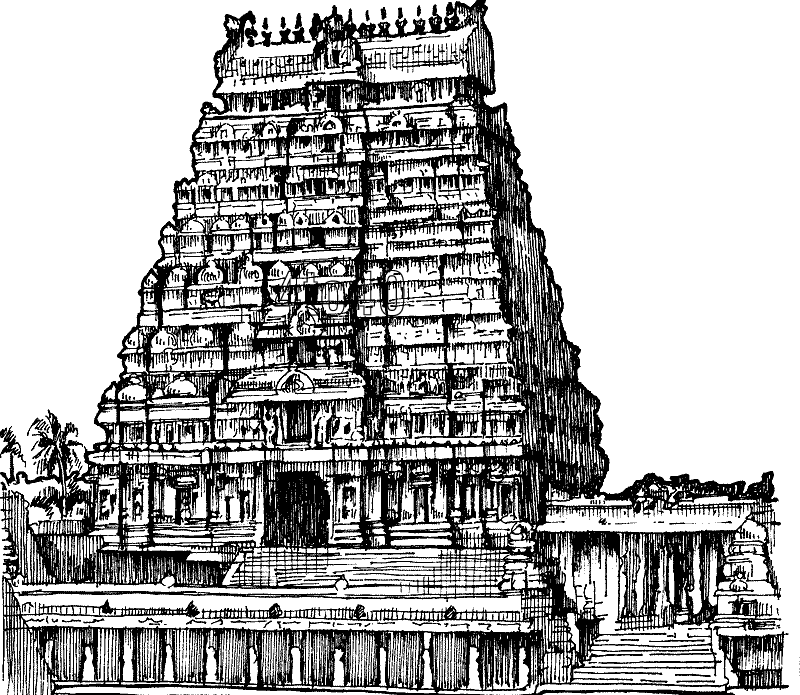LALITHA SAHASRANAMAM
@ S. Subramaniam

[ 48. Nih:samshaya Samshayaghni Nirbhava Bhavanashini ]
निःसंशया (172)
Nihsamshaya (172)
Meaning:
Devi has absolutely no doubts at all. She is the supreme storehouse of knowledge.

Interpretation:
Nih means Nil and Samshayam means doubt. Therefore Nihsamshaya refers to that person who has no doubts.
When expanded, the expression becomes Nirgatah samsayah yasyah sa which means Devi is without any doubt.

Doubts arise while seeking knowledge. Students ask questions and the Guru clarifies the doubt. When Devi herself is the embodiment of knowledge, the question of Devi having doubts doesn't arise at all.

Devi is Sarva Gnanamayi and Sarva Shaktimayi hence, there is no place for any doubts in her.

Samshaya well explained:
Apart from doubt, Samshaya (संशय ) also means hesitation. It is one of the thirty-six lakshanas, or “excellent points of a drama composition. When (due to many considerations) a sentence is brought to an end without fully communicating the essential theme, it lacks clarity and is called Hesitation or Samshaya.
Author's Notes:
We now move on to several references in various Sanskrit texts dealing with the term Samshaya.

Quote 1 of 3 the Bhagvad Geeta
While explaining the concept of Nishkama Karma Yoga, Lord Krishna underlines the importance of getting rid of doubts or Samshaya to Arjuna:
तस्माद् अज्ञान-सम्भूतं हृत्-स्थं ज्ञानासिनात्मनः ।
छित्त्वैनं संशयं योगम् आतिष्ठोत्तिष्ठ भारत ॥
Tasmad Ajnana Sambhutaṃ hṛita-sthaṃ Gnana Sinntmanaḥ Chittvainaṃ Saṃshayaṃ yogam Atiṣhṭa Uttiṣhṭa Bharata ||
O descendant of Bharata, with the sword of knowledge, slash the doubts in your heart which are born of ignorance. Take shelter of this (Nishkama Karma) yoga and prepare for the battle.

Quote 2 of 3 from Mandukya Upanishad
Interestingly this sloka from Mandukya Upanishad reiterates the Adwaita philosophy of Adi Shankara.
यथा स्वप्ने द्वयाभासं चित्तं चलति मायया ।
तथा जाग्रद्द्वयाभासं चित्तं चलति मायया ॥ ६१
अद्वयं च द्वयाभासं चित्तं स्वप्ने न संशयः ।
अद्वयं च द्वयाभासं तथा जाग्रन्न संशयः ॥ ६२
61-62 : As in a dream, the mind is seen to act through Maya. All things manifes to appear in duality. so also in the waking state the mind is seen to act, through Maya, producing the appearance of duality.
There is no doubt that the mind which is, in fact, non-dual, appears as dual in dream; likewise undoubtedly in the waking state, which is also non-dual, appears to be dual.

Quote 3 of 3 from Tattva Sangraha - a book on Buddhism.
The term Samshayam is not restricted to Hinduism alone. A Sloka from a book on Buddhism also has a reference to the term. Tattva Sangraha (English translation by Ganganatha Jha), one of the books in my private library, gives a wonderful explanation to the term.
माभूद्वा साधनं तत्र बाधके त्वविनिश्चिते ।
संशयः स्यादयं त्वेषां निश्चयः किंनिबन्धनः ॥
Mabhudva Sadhanaṃ Tatra badhake tvavinischite | Saṃsayaḥ syadayaṃ tveṣaṃ Niscayaḥ Kiṃ Nibandhanaḥ ||
Even if there is no proof in support of it, so long as there is no reason definitely against it, the matter should remain in doubt; on what could this certainty of these people be based?
Disclaimer: All matters contained in this article are the property of www.templesofasia.com. The opinions expressed in this article are purely that of the author. The author alone is responsible for the accuracy, authenticity, completeness and validity of all the information in the article.


Comments